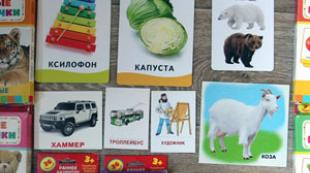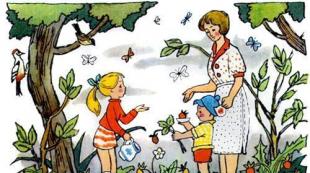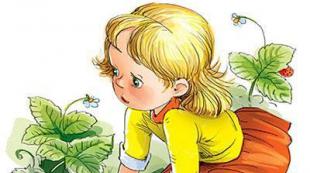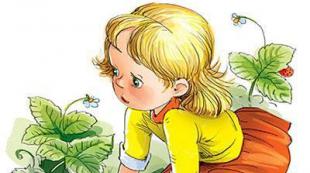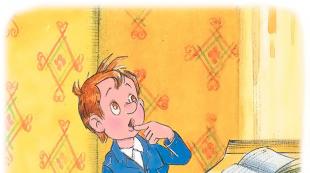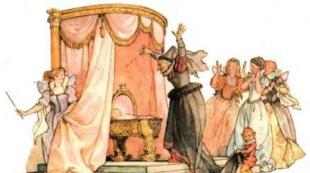We study the forms of developing cards to print. Doman Method. How to practice? And is it worth
08.08.2018
Julia Tatarinova
 In a previous article, I shared ideas for children. Today I publish a review of the cards.
In a previous article, I shared ideas for children. Today I publish a review of the cards.
Someone prefers drawings, someone photographs. But the most important thing about cards is their durability.
When buying, pay attention to the size. Large cards are better than small ones. We have both and Antoshka likes to play with the bigger ones. And small cards are convenient to use for sorting games, because it is desirable to have a lot of them and it would be nice to be inexpensive.
Series "Smart cards"(Ozone, My-shop) from Rosmen publishing house.
This is our favourite. Each set contains 32 cards, some 36. The ideal size is 155 x 105 mm. The cardboard is dense, the images are bright and very realistic. A huge selection of kits: animals, food, sports, professions, letters, counting and much more.

Some kits, such as "Colors" and "Geometric Shapes" are slightly smaller in size, but are also definitely worth buying.


On the reverse side are various tasks and questions for the child. So this is an additional source of ideas for card games.

Handout cards

In a set of 16 pieces. The cards are small - 87x64 mm. This is their minus. But the price is great.

For a penny, you can have a whole set of cards on a wide variety of topics: dishes, tools, hats, wintering birds, etc.

 Demo Pictures(Labyrinth, Ozone, My-shop) from the Sfera publishing house.
Demo Pictures(Labyrinth, Ozone, My-shop) from the Sfera publishing house.
The same series, only these are not quite cards, because. they are very large (220x175 mm). This is the perfect equivalent of handout cards, only much larger. And the themes are the same. Well, they cost more.
On the reverse side - a poem, riddles, questions and information about the object.
Demonstration pictures are ideal for learning topics such as trees, birds. After all, it is important to be able to see the details.
The set also includes 16 cards.
IQ Baby Series(Ozone, My-shop) from Iris-press publishing house.
We do not have such cards, but they look attractive in terms of price and appearance. According to reviews, not very thick cardboard. Size - 80x90 mm.
Huge selection of topics. Each set has a different number of cards - from 12 to 23. The sets with three-dimensional figures and polyhedrons are very interesting.

Educational cards "Wunderkind from the cradle"
There are sets with mini-cards - 84 - 100 cm, and there are with large ones - 165 - 195 mm. Thick cardboard and convenient packaging. There are sets of 20, and there are 40 double-sided cards.
We have on the topic "Car Brands". On one side of the car, and on the other - their logo.

While doing this review, I found excellent sets that I will definitely buy: Masterpieces of Artists and Cosmos. On the reverse side - interesting facts and tasks.
Series "Entertaining cards"(Ozone, My-shop) from Iris-press.
Large and colorful pictures aimed at teaching counting, reading, spelling, learning English and getting to know the outside world. Each set is designed for a different level of mastering the skill of reading or counting.

The game uses both front and back sides.

There are detailed instructions for parents.
Like this series very much. High quality. We still have a set of "Mice". Antoshka works with great pleasure.

Series "Clever. World in the palm of your hand"(Labyrinth, Ozone, My-shop).
There are large sets of 144 cards, dear. And there are less. There are interesting facts on the reverse side.
In my opinion, it's too expensive. The series is very popular, but there are also reviews full of disappointment.

Educational cards from the publishing house "Umka"(Ozone).
Presented in three series.
There is a series of "16 educational cards", size - 190x120 mm.
The cardboard is thin. Photos and facts are shown on the front side. It would be better if the information block was moved to the reverse side.
"Tear-off cards", which also indicates insufficient cardboard density. And there are only 12 cards.
And there is a series of 36 cards, the packaging is similar to "Smart cards" from Rosman. On one side - pictures, on the other - tasks for the child. But the quality of "Smart Cards" does not cause me any doubts, unlike these.

memory
Memory is a well-known card matching game. Develops memory and expands horizons. It is interesting to play for both children and adults. It is convenient to take this game on a trip, because. it takes up little space.
My husband and I play these sets (Labyrinth, Ozone, My-shop):

There are special kits for kids.

labyrinth
My shop

labyrinth
Ozone
My shop

labyrinth
What can you play with children's cards.
First you need to remember what is drawn on the cards.
Game 1.Who came to visit?
Take some animal cards. And say, “Look, this is a cat. The cat has come to visit you. Meow meow. Oh, who is this? Dog! I also came to visit you! The dog says wow wow. Show me where the cat is. And where is the dog? Be sure to praise your child.
Game 2.Cook.
You need a baby plate and your baby's favorite toy (doll or soft toy). Take pictures of vegetables and fruits. “Let's prepare a delicious salad for the doll, What should we put in it? Let's put a tomato, a cucumber, a carrot, etc.” By analogy, you can cook soup, compote, treats for guests, etc.
Game 3.Zoo.
Tell the baby that now you will go to the zoo with him to see the animals. Spread the cards around the room, and go from one to another, naming the animals. (Similarly, you can play "Farm", "Forest").
Educational games with children's cards.
1) Mix cards of 2 or more topics (depending on the age of the child) and ask them to put each topic separately.
2) Put the cards in a bag, take the cards out of it one by one and name what is drawn on them.
3) Arrange the cards face up. The presenter calls the pictures, and the children must find them at speed, who is faster.
4) Take 2 or more cards (depending on the age of the child). Show each picture and flip. Ask the child to show where the picture is.
5) Cards can be used as counting material (count flowers, mushrooms).
|
Children's cards "Birds" There are 9 cards in the set - a lark, a swallow, a magpie, a bullfinch, an owl, a woodpecker, a dove, a sparrow, a titmouse. |
|
 |
Children's cards "Waterfowl" There are 9 cards in the set - swan, pelican, penguin, seagull, crane, flamingo, albatross, grebe, stork. |
 |
Children's cards "Flowers" There are 9 cards in the set - rose, chamomile, dandelion, lily of the valley, cornflower, lily, carnation, sunflower, chrysanthemum. |
 |
Children's cards "Berries" The set contains 9 cards - sea buckthorn, cranberries, grapes, blackberries, rose hips, plums, raspberries, strawberries, cherries, black and red currants, gooseberries |
 |
Children's cards "Musical instruments" The set contains 9 cards - drum, violin, accordion, guitar, piano, maracas, saxophone, trumpet, harp |
 |
Children's cards "Clothes" There are 21 cards in the set - hat, belt, jacket, trousers, coat, jacket, shorts, t-shirt, hat, shirt, dress, socks, shoes, boots, boots, sneakers, sandals, women's shoes |
 |
Children's cards "Vegetables and fruits" There are 21 cards in the set - apple, banana, kiwi, lemon, pear, tangerine, apricot, peach, pineapple, peas, pumpkin, corn, pepper, broccoli, beet, carrot, potato, cucumber, tomato, cabbage, eggplant. |
 |
1) Print the cards, stick them on thick cardboard (or laminated ceiling tiles).
2) Laminate them with tape on both sides (buy the widest tape).
3) Cut out each card (if glued to a ceiling tile, it is convenient to use a clerical knife and a ruler to cut it out).
What can you play with children's cards.
First you need to remember what is drawn on the cards.
Game 1.Who came to visit?
Take some animal cards. And say, “Look, this is a cat. The cat has come to visit you. Meow meow. Oh, who is this? Dog! I also came to visit you! The dog says wow wow. Show me where the cat is. And where is the dog? Be sure to praise your child.
Game 2.Cook.
You need a baby plate and your baby's favorite toy (doll or soft toy). Take pictures of vegetables and fruits. “Let's prepare a delicious salad for the doll, What should we put in it? Let's put a tomato, a cucumber, a carrot, etc.” By analogy, you can cook soup, compote, treats for guests, etc.
Game 3.Zoo.
Tell the baby that now you will go to the zoo with him to see the animals. Spread the cards around the room, and go from one to another, naming the animals. (Similarly, you can play "Farm", "Forest").
Educational games with children's cards.
1) Mix cards of 2 or more topics (depending on the age of the child) and ask them to put each topic separately.
2) Put the cards in a bag, take the cards out of it one by one and name what is drawn on them.
3) Arrange the cards face up. The presenter calls the pictures, and the children must find them at speed, who is faster.
4) Take 2 or more cards (depending on the age of the child). Show each picture and flip. Ask the child to show where the picture is.
5) Cards can be used as counting material (count flowers, mushrooms).
|
Children's photo cards "Birds"(new) There are 22 cards in the set (It is convenient to combine classes with cards with viewing a presentation on the topic "") |
|
 |
Children's cards "Numbers from 1 to 20" There are 20 cards in a set (Numbers from 1 to 20, with the corresponding number of dice) |
 |
Children's cards "Transport" The set contains 16 cards (Airplane, helicopter, motorcycle, ship, car, tractor, car, train, truck, excavator, crane, fire truck, taxi, police, ambulance, bus, water carrier) |
 |
There are 24 cards in the set (Winter - 6 cards, spring - 6 cards, summer - 6 cards, autumn - 6 cards) |
 |
Children's cards "Wild animals" There are 9 cards in the set - bear, fox, raccoon. squirrel, hare, mouse, wolf, elk deer |
 |
Children's cards "Pets" There are 12 cards in the set - a pig, a donkey, a sheep, a dog, a cat, a goose, a rooster, a turkey, a duck, a cow, a horse, a goat |
 |
4125
Free download 16 educational cards on the topic "Toys". The first card games for kids. Memory card games.
Cards are designed for games with babies from 9 months. Start playing from the age you deem necessary, based on the developmental characteristics of your child. I will indicate in brackets the age at which Maxim and I started the games.
How to play
1. Compliance (from 9 months)
For the very first acquaintance with cards and the concept of the image of objects, real photographs of toys and interior items of your apartment are best suited. If this is not possible, we print cards.
We get acquainted with the cards and show the baby first a real toy, then shown in the picture.
2. Find a picture (from 1 year old)
We call the toy, for example, "Ball" and ask the child to indicate the correct one from the four cards laid out.
3. Children's lotto (from 1 year old)
We print cards in two copies. One is cut, the other is not. We give the child a card with 4 images, take out the cut ones one at a time, tell and show how these cards relate. For the first lesson, 4 will be enough, then we complicate.
4. Remember where (from 1 year old)
We lay out several cards in front of the child (depending on complexity) and ask them to remember for 5 seconds, then turn them over with a shirt and ask in turn where which toy hid.
Educational cards for children are an excellent learning material. But do not wave them in front of the child, it is much more interesting to play with them. Today I will tell you what educational games we play, then I will give links to the material that we have been using in the last couple of months. The most important principles that I follow are that the game should not only be educational, but also bring secondary benefits. This can be physical activity, speech therapy gymnastics, or repetition of long-traveled material in a form that is interesting for the child. I am sure that in this article you will find a lot of useful and interesting things for the development of your children.
In this photo my baby is 1 year 3 months old
- Foreword
- Description of 9 games
- French download
- English download
Hello dear blog readers. I often write that my son likes developing cards and plays with them with pleasure. I think my child is not the only one. I'm sure other kids are drawn to all sorts of cards. Now Alexander is 3 years 7 months old, in the last six months he can occupy himself for 15-30 minutes in an independent game. And if these are not cars, then definitely cards.
It would seem, why invent something if he himself can get them, play with them and put them back? However, any child with more interest will participate in the game with a favorite object. Another reason for organizing joint games is that my son still prefers me as a spectator. That is, he lays out, plays, and does not lose sight of his mother. And if I sit down next to him, he will immediately ask: “Mommy, do you want to play with me?”.
Just a week ago, my son woke up with the words: “Where is our poster with mushrooms?”. We beat the mushrooms in the second round a few months ago, and I was relieved to remove the poster so that I had a piece of the wall. That morning we had breakfast, played, worked out, and I went to cook dinner, and Alexander himself found something to do:
- He himself took out developing cards about mushrooms;
- he chose which he wanted;
- I started reading to myself.
When he read almost everything (they are lying on the sofa in front of him in the video), I nevertheless looked up from the stove and approached with the camera. Of course, Alexander noticed me, but this did not bother him at all.
Educational cards - games
1. How can you not just learn the alphabet, but really remember which letter comes after which? You will need developing cards "Alphabet". We lay them out on the floor and remove 3-5 letters. We give these 3-5 cards to the child, having mixed them in advance. We turn on the music and the child runs around the alphabet. As soon as the music has stopped, he must correctly arrange the letters that he has in his hands. The game can be played many times, removing all new letters. As long as the child has the mood and desire, you can play.
I do not turn on the music, I hum any melody, while holding the whistle in my hand. As soon as I finish humming and the whistle sounds, Alexander lays out the missing letters. Since I decided to write about these games, I'll post a very homemade video. It is spontaneous, I took it off on one of the Sundays - our English day. Alexander quite unexpectedly sang, I picked it up, in general, the child stretched his legs and vocal cords.
On that day, he took out his alphabet puzzles, which we used when we first started learning English (at the age of three). And so that my son would not just connect them, but there would be some benefit, I invited him to play.
2. Another alphabet game. In any container, open or in the form of a bag, we add cards with words. And on the other side, on the floor or carpet, lay out the alphabet. The child puts his hand in the container and pulls out one word. If the kid is reading, then he reads and finds the corresponding letter of the alphabet with which this word begins. If not reading, then the parent calls the word, and the child finds the letter. It seems to me that this game can arouse interest among children who are engaged in the Reading from Diapers kit.
3 . We take developing cards, for example, fruits or vegetables, and any food. Two people must participate in the game, since Alexander has no brothers and sisters, I am his partner. He chooses any card, and I turn my back on him. The child is trying to explain to me with suggestive sentences what is depicted on it. For example, “apple” - it can be green, red, yellow, it is juicy, juice is made from it, the peel is removed from it before eating, etc. Or “cupcake” - it is sweet, it is cooked in the oven, you can add raisins or nuts to it, etc. Then we change.
It is important that the child hears how a more experienced partner plays! So he himself imperceptibly learns. As you understand, vocabulary is developed in this game. We play it in English. not grown up yet.
And the last time we played this game, what do you think? With a set of 100 flowers from Umnitsa. We went through this kit a long time ago, but sometimes I see that information about the color is forgotten. I divided all the material into shades, took only red ones and began to ask leading questions in turn. So with pleasure they repeated the material that had been covered for a long time.
4. Basically, all educational cards have a picture and a word, that is, they are not made according to Doman. But we are “crazy hands moms” and we can do everything ourselves.
So, for example, your child is learning body parts in Spanish. We make one card with a picture, and another with a word that denotes this picture. Lay everything face down and turn over two at a time. If the child got a picture - a nose and a word - a nose, then he takes them for himself, if not, then he leaves them for you. In other words, this is a Memory game, but in it you need to combine a picture with a word, which gives the child not only knowledge of the names, but also the practice of reading. I think that it is clear that the one who has collected more pairs wins.
5. Do not forget about the basics, remember how you flew, jumped on the “Children Reading” cards? If your educational material is laminated, then you can make a “bridge” across the “river”, along which the child must jump to the other side. With each jump, he names a card.
6. You need to print and cut out a medium sized fish. On the floor, stretch the adhesive tape for two meters, different in color from the floor. The child stands at one end, the parent at the other. An adult shows a card and the child must name it correctly. In this case, for kids, you can choose developing cards with pictures, and for older children with words. If it was possible to read a word or name an object, then the child can blow on the fish so that it “floats” along the river. When the fish swims up to the parent, it means that the child has won. I think that it is not necessary to talk about the importance.
7. If your baby allows you to blindfold him, then do it, if not, then let him close them. The parent divides the study material equally and places stacks in each of the four corners of the room. The child stands in the middle of the room and the mother begins to spin him, while he counts to ten (development). Mom tries to twist the child so that he stops facing one of the corners. The kid takes the cards from this corner, the parent calls them or he reads them himself. The game continues by spinning the other way...and ends when the cards from all corners have been taken.
The last time we played it was with “emotion robots”, which will be linked below. Discussed all the emotions in English. I learned so many interesting things about my child by asking questions: “Why do you think the robot is sad?”, “What makes you sad sometimes?”. And so about all the emotions - cheerful, frightened, proud.
8. Great practice for asking questions. The parent shows what topic the game will be about. Then the baby turns away, and the adult chooses one card and holds it face to face. The child asks questions: “Is it a dog?”, “Is it a ball?”, “Is it a book?” etc. If the child guesses the object, then he takes it for himself. Now the parent should ask questions about the object chosen by the child. Remember the importance of role reversal - you are setting the right example by quietly teaching.
We played this game with bulk . First, of course, they picked up household items for each card, and then they asked each other questions.
9. Animal theme. The parent has developing cards with animals and he agrees in advance that the child will be given 3 clues for each object. For example: he has 5 fingers on his front paws, he is very strong, there are stripes on his skin. Who is it? Of course the tiger!
The child can guess from the first clue or from the third. If you didn’t guess right, then put it off until the next time without showing the card to the child. Let him think about the clues, next time he will definitely succeed.
Download educational cards: review with link
Now I will share with you a variety of download links for the material. If you teach your child English or French, then the cards I have collected will definitely help you in interactive classes. You can read about how my son learns languages, as well as about bilingualism in children, in the articles of certain headings, which are located in the right column of the blog. Here, I advise you to go to the comments after reading it. There, parents share their experiences and get answers to questions.
So, let's begin. Wouldn't your child like these math pictures? And if you apply the games described above?

To download, click on Numbers 1 to 10 Flash Cards – A4 by going to Mr.printables
Teaching material in French
Fruit in French are given on the page along with the video and the correct pronunciation of each word in the voice recording. To download, you need to click directly on the picture.
Unfortunately this site has closed. Therefore, below I give links for downloading those cards that I have preserved.

Vegetables in French. Download.

Sweets in French
My dear mother! After studying them, my husband had to take us to the best pastry shop in the city, since we could not agree to anything less. I have never seen Alexander gobbling up so many sweets. We went, we ate, we calmed down.
Free download.

Alphabet in French
The French alphabet is very gentle, all colors are soothing. You can download it on the website Mr. printables

signs of nature

Study material in English
Alphabet in English
I can't imagine a person who wouldn't fall in love with this work of art, but here's the problem, the site provides a link to material in half a matchbox or in a huge size for decorating children's rooms. Therefore, in order for the training material to appear at the correct size, I had to manually edit each picture. Taken from the site Rookno17. And let me download my link with edited content.

Or maybe you like the clearer outlines of the minimalist? Then you here.
What I liked about this alphabet are words that are rarely used in English flashcards.

Did you know that you can make such wonderful pictures for a children's room from developing cards?

Flags for children
